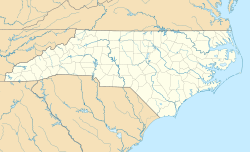Hilliardston, North Carolina facts for kids
Quick facts for kids
Hilliardston, North Carolina
|
|
|---|---|
| Country | United States |
| State | North Carolina |
| County | Nash |
| Elevation | 200 ft (60 m) |
| Time zone | UTC-5 (Eastern (EST)) |
| • Summer (DST) | UTC-4 (EDT) |
| Area code(s) | 252 |
| GNIS feature ID | 1020779 |
Hilliardston is a small, quiet place located in Nash County, North Carolina, in the United States. It is known as an unincorporated community. This means it doesn't have its own local government, like a city or town would. Instead, it's part of the larger county area. People living in Hilliardston rely on Nash County for services such as schools, roads, and emergency help.
Contents
What is an Unincorporated Community?
An unincorporated community is a group of homes or businesses that are not officially part of a city or town. They don't have a mayor or a city council. Instead, the county government handles most of their needs. This can be different from a city, which has its own rules and services.
How Hilliardston is Governed
Since Hilliardston is unincorporated, it falls under the rules of Nash County. The county commissioners, who are elected by the people, make decisions for the entire county, including Hilliardston. This includes things like setting local taxes and planning for new roads.
Local Services in Hilliardston
Even without its own city government, Hilliardston still gets important services.
- Public Safety: The Nash County Sheriff's Office provides police protection. Fire and rescue services come from local volunteer fire departments.
- Education: Students in Hilliardston attend schools that are part of the Nash County Public School System.
- Utilities: Water, electricity, and other utilities are usually provided by regional companies or the county.
Geography and Location
Hilliardston is located in the eastern part of North Carolina. It sits at an elevation of about 200 feet (61 meters) above sea level. The area is mostly flat, with some gentle rolling hills. This kind of land is common in the coastal plain region of North Carolina.
Natural Surroundings
The land around Hilliardston is often used for farming. You might see fields of crops like corn, soybeans, or tobacco. There are also many forests with trees like pine and various hardwoods. Small streams and rivers flow through the area, contributing to the local ecosystem.
Climate in Hilliardston
Hilliardston has a humid subtropical climate. This means it has hot, humid summers and mild winters. Spring and autumn are usually pleasant. The area gets a good amount of rainfall throughout the year, which helps the farms and forests grow.
History of Hilliardston
Like many small communities in North Carolina, Hilliardston likely grew around a crossroads or a local store. These places often became centers for farmers to trade goods and for families to gather. Over time, a small community formed.
Early Development
The community's name, Hilliardston, probably comes from a family or person named Hilliard who was important in the area's early days. Many places in North Carolina are named after founding families or significant landowners.
Life in the Past
In the past, life in Hilliardston would have been very focused on agriculture. Most families would have worked on farms. The community would have been a close-knit group, relying on each other for support. Local churches and schools would have been important gathering places.
Community Life Today
Today, Hilliardston remains a small, rural community. While farming is still important, many residents might work in nearby towns or cities. The quiet lifestyle and natural beauty are often reasons people choose to live here.
Local Activities and Events
While Hilliardston itself might not have many large events, residents can participate in community activities in Nash County. These might include local festivals, farmers' markets, or school events. Being part of a larger county means access to more resources and opportunities.
Connecting with Neighbors
Even without a formal town center, people in Hilliardston often connect through local churches, community groups, or simply by being neighbors. This helps keep the community spirit alive.



